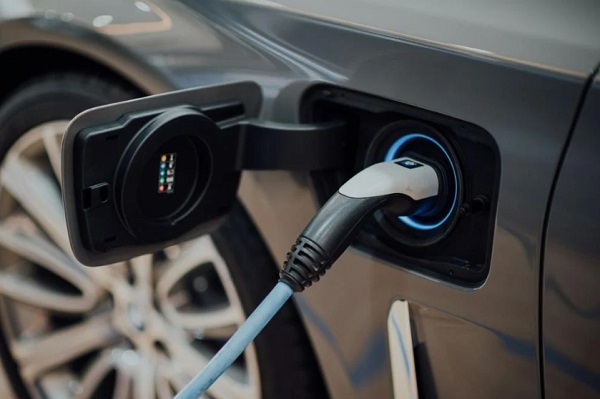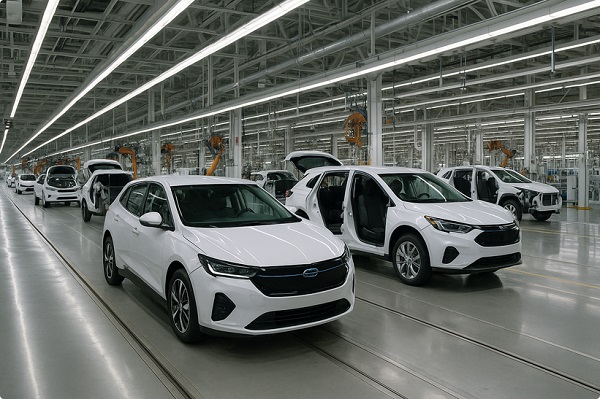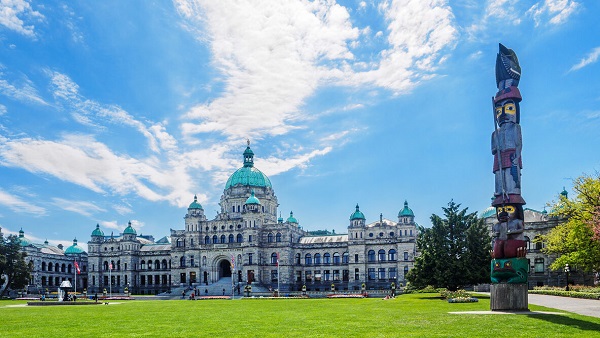Automotive
The EV battery ‘catch-22’

From The Center Square
While setting aggressive goals for electric vehicle market share, the Biden administration also wants tariffs and or restrictions on the importation of vehicles and the minerals needed for their batteries – creating heightened concerns over supply chains in what can be described as a “Catch-22” situation.
Solutions to some of the problems include battery recycling and increased domestic mining, however, the U.S. is currently limited in its capacity for both. Federal funds are spurring new recycling plant projects, but questions remain on whether there will be enough used material to meet projected needs.
In his e-book, “The EV Transition Explained,” Robert Charette, longtime systems engineer, and contributing editor for IEEE Spectrum, says making the transition is harder than anyone thinks. He recently told The Center Square it is truer now than it ever was.
“None of this is simple,” he said.
His argument centers on the lack of planning and systems engineering on initiatives that are politically, not engineering, driven. While change is possible, he suggested it would require trillions more in government spending and enforcing those changes through law.
Charette identified many serious issues in setting up the EV battery infrastructure – and even if those challenges are met, he said, there may be tradeoffs between affordability, security and environmental concerns.
Profitability. Battery recycling is a still-developing process which is time consuming and expensive. The cost of purchasing recycled materials may be more costly than buying them new.
Manufacturing demand and potential backlog. The U.S. will require eight million batteries annually by 2030 to meet the government’s EV target, with increases each year after that.
Standardization. Batteries vary in configuration, size, and chemistry.
Domestic mining. While decreasing our dependency on outside sources, what are the environmental impacts? It can also take years to acquire permits and get a lithium mine up and running.
Mineral shortfalls. Secure and sustainable access to critical minerals like copper, lithium, cobalt, and nickel is essential for a smooth and affordable transition to clean energy. An analysis by the International Energy Agency indicates a “significant gap” between the world’s supply and demand for copper and lithium. Projected supplies will only meet 70% of the copper and 50% of the lithium needed to achieve 2035 climate targets.
The report said that “without the strong uptake of recycling and reuse, “mining capital requirements would need to be one-third higher. The agency also emphasizes China’s dominance in the refining and processing sector.
Transportation of discharged batteries classified as hazardous waste is one of the costliest steps of the recycling process. Experts suggest updates to federal EPA and DOT regulations for how battery-related waste is classified. In addition to health and safety, they say clearer definitions of what constitutes hazardous waste would help reduce transportation costs. Many recycling plants are being built in regions where production sites are located to address this.
Supply chain and skills gap shortages. The timetable set by the government is not aligned with the capabilities of the current supply chain. Software plays a key role in the management and operation of an EV battery, and automakers are competing for a limited supply of software and systems engineers.
Competing interests. The goal is to create a circular battery economy, reducing the need for raw materials. However, an EV battery that is no longer useful for propelling a car still has enough life left for other purposes such as residential energy storage. Experts propose a battery material hierarchy where repurposing and reusing retired EV batteries are more favorable to immediately recycling them, detouring them out of the cycle.
Charette says the biggest problem with recycling projections is that they are built on assumptions that have not been tested.
“We won’t know whether these assumptions hold until we reach a point where we are recycling millions of EV batteries,” he said.
Because most EV lithium-ion batteries produced through 2023 are still on the road, the International Council on Clean Transportation reports that the majority of materials being used as feedstock by recycling plants currently come from scrap materials created during battery production.
According to Charette, manufacturers also claim future generations of batteries will last 15 to 20 years, which he says would put a bigger kink in the used-battery supply chain.
Another issue contributing to consumers’ reluctance to buy an EV is the inability to determine the overall health of your battery. Current testing methods are inefficient and costly.
EV adoption has so far not met projections and with all the competing interests, Charette said the market will ultimately tell us what direction the situation is headed. He is also intrigued over the impact government pressure will have on the eventual outcome.
He said many individual components have yet to be worked out, adding that although there is a vision, “we’re a heck of a long way from that vision to getting where we need to go.”
In his opinion, battery recycling issues are even further behind than transitioning the electric grid to renewable energy sources.
Automotive
Canada’s EV experiment has FAILED

By Dan McTeague
The government’s attempt to force Canadians to buy EVs by gambling away billions of tax dollars and imposing an EV mandate has been an abject failure.
GM and Stellantis are the latest companies to back track on their EV plans in Canada despite receiving billions in handouts from Canadian taxpayers.
Dan McTeague explains in his latest video.
Automotive
Carney’s Budget Risks Another Costly EV Bet

From the Frontier Centre for Public Policy
GM’s Ontario EV plant was sold as a green success story. Instead it collapsed under subsidies, layoffs and unsold vans
Every age invents new names for old mistakes. In ours, they’re sold as investments. Before the Carney government unveils its November budget promising another future paid for in advance, Canadians should remember Ingersoll, Ont., one of the last places a prime minister tried to buy tomorrow.
Eager to transform the economy, in December 2022, former prime minister Justin Trudeau promised that government backing would help General Motors turn its Ingersoll plant into a beacon of green industry. “By 2025 it will be producing 50,000 electric vehicles per year,” he declared: 137 vehicles daily, six every hour. What sounded like renewal became an expensive demonstration of how progressive governments peddle rampant spending as sound strategy.
The plan began with $259 million from Ottawa and another $259 million from Ontario: over half a billion to switch from Equinox production to BrightDrop electric delivery vans. The promise was thousands of “good, middle-class jobs.”
The assembly plant employed 2,000 workers before retooling. Today, fewer than 700 remain; a two-thirds collapse. With $518 million in public funds and only 3,500 vans built in 2024, taxpayers paid $148,000 per vehicle. The subsidy works out to over half a million dollars per remaining worker. Two out of every three employees from Trudeau’s photo-op are now unemployed.
The failure was entirely predictable. Demand for EVs never met the government’s plan. Parking lots filled with unsold inventory. GM did the rational thing: slowed production, cut staff and left. The Canadian taxpayer was left to pay the bill.
This reveals the weakness of Ottawa’s industrial policy. Instead of creating conditions for enterprise, such as reliable energy, stable regulation, and moderate taxes, progressive governments spend to gain applause. They judge success by the number of jobs announced, yet those jobs vanish once the cameras leave.
Politicians keep writing cheques to industry. Each administration claims to be more strategic, yet the pattern persists. No country ever bought its way into competitiveness.
Trudeau “bet big on electric vehicles,” but betting with other people’s money isn’t vision; it’s gambling. The wager wasn’t on technology but narrative, the naive idea that moral intention could replace market reality. The result? Fewer jobs, unwanted products and claims of success that convinced no one.
Prime Minister Mark Carney has mastered the same rhetorical sleight of hand. Spending becomes “investment,” programs become “platforms.” He promises to “catalyze unprecedented investments” while announcing fiscal restraint: investing more while spending less. His $13-billion federal housing agency is billed as a future investment, though it’s immediate public spending under a moral banner.
“We can build big. Build bold. Build now,” Carney declared, promising infrastructure to “reduce our vulnerabilities.” The cadence of certainty masks the absence of limits. Announcing “investment” becomes synonymous with action itself; ambition replaces accountability.
The structure mirrors the Ingersoll case: promise vast returns from state-directed spending, redefine subsidy as vision, rely on tomorrow to conceal today’s bill. “Investment” has become the language of evasion, entitlement and false pride.
As Carney prepares his first budget, Canadians should remember what happened when their last leader tried to buy a future with lavish “investment.”
A free economy doesn’t need bribery to breathe. It requires the discipline of risk and liberty to fail without dragging a country down. Ingersoll wasn’t undone by technology but by ideological conceit. Prosperity cannot be decreed and markets cannot be commanded into obedience.
Every age invents new names for old mistakes. Ours keeps making the same ones. Entitled hubris knows no bounds.
Marco Navarro-Genie is vice-president of research at the Frontier Centre for Public Policy and co-author, with Barry Cooper, of Canada’s COVID: The Story of a Pandemic Moral Panic (2023).
-

 Business1 day ago
Business1 day agoCarney government should retire misleading ‘G7’ talking point on economic growth
-

 Aristotle Foundation2 days ago
Aristotle Foundation2 days agoB.C. government laid groundwork for turning private property into Aboriginal land
-

 Brownstone Institute23 hours ago
Brownstone Institute23 hours agoBizarre Decisions about Nicotine Pouches Lead to the Wrong Products on Shelves
-

 Alberta1 day ago
Alberta1 day agoCanada’s heavy oil finds new fans as global demand rises
-

 Censorship Industrial Complex1 day ago
Censorship Industrial Complex1 day agoPro-freedom group warns Liberal bill could secretly cut off Canadians’ internet access
-

 Justice2 days ago
Justice2 days agoA Justice System That Hates Punishment Can’t Protect the Innocent
-

 Bruce Dowbiggin1 day ago
Bruce Dowbiggin1 day agoA Story So Good Not Even The Elbows Up Crew Could Ruin It
-

 Daily Caller1 day ago
Daily Caller1 day agoNigeria Would Welcome US Intervention In Massacre Of Christians By Islamic Terror Groups








